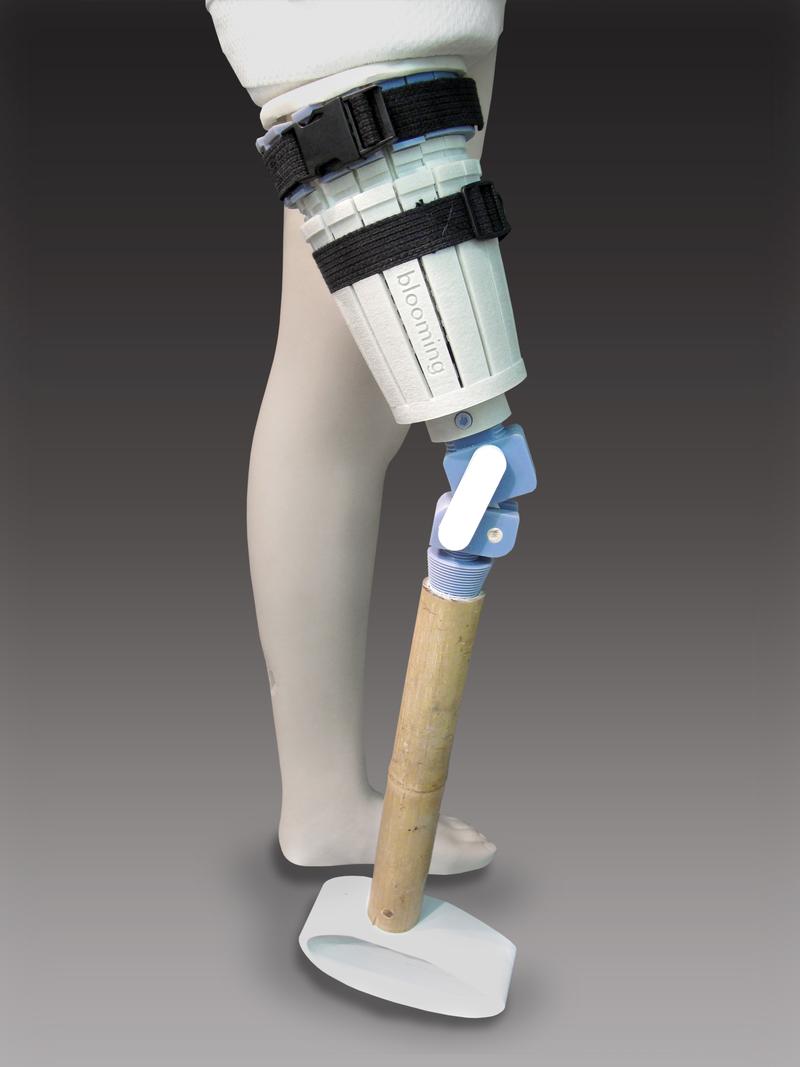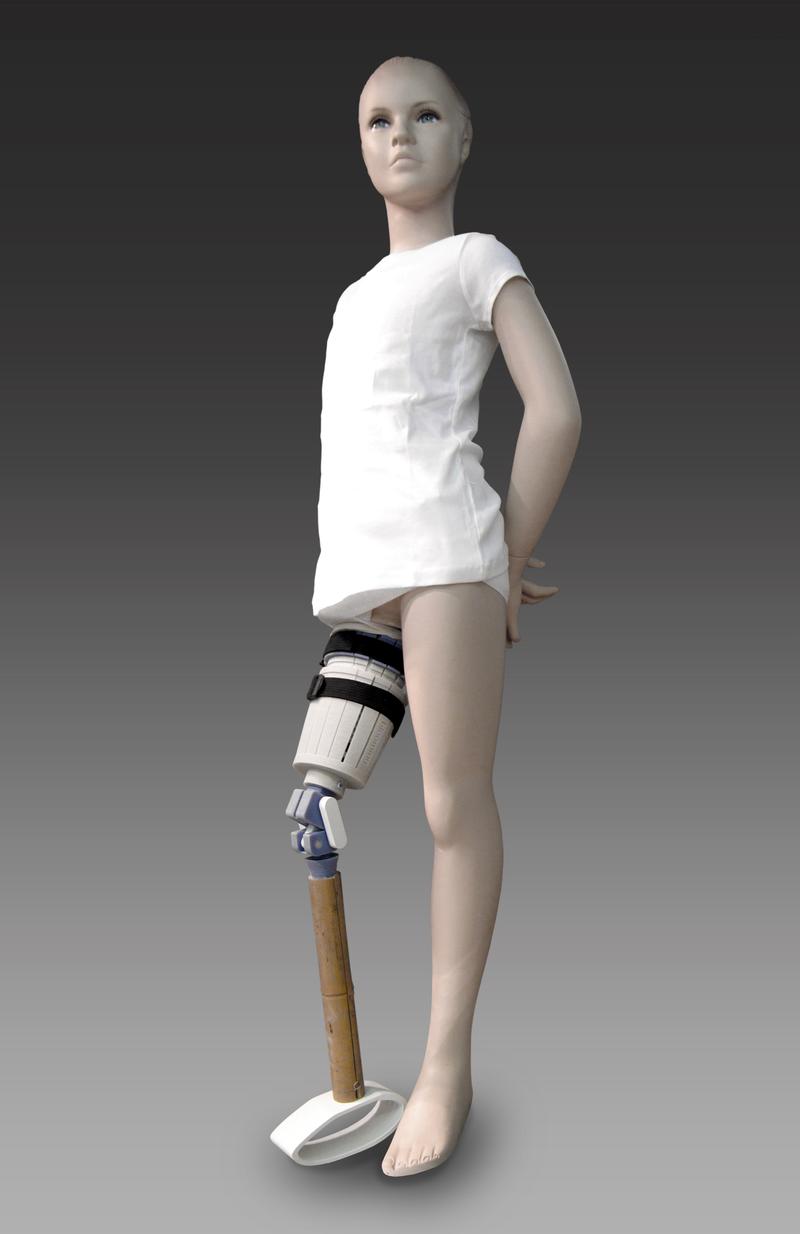2023 Galleries
The Spark Gallery pages are one of our most popular design destinations, with thousands of visitors each year. Check out some of the latest Spark entries, in the galleries below.
Galleries // 2012 Spark:Concept // blooming
blooming
Winner - Platinum
Competition: Spark:Concept
Designer: Sujin Hwang
Design Type: Product Design
Designer:Sujin Hwang//Instructor:Grant Delgatty//Institution:Art Center College of Design// “blooming” is an adjustable prosthetic leg for above-knee child amputees especially in developing countries. According to UNICEF, children in at least 68 countries face the threat of death or limb loss from landmines. They estimate the presence of 37 million landmines on the African continent, and 10 million in Angola alone. In developing countries including Africa, children are important labor in their family as much as adults, so sometimes being handicapped means being abandoned. Even though the family tries to take care of the injured kids, they can barely afford it. Generally, prosthetic legs for above-knee amputees have five big parts; thigh socket, knee joint, calf shank, ankle, and foot. The every single part has to be customized by specific prosthetic specialists. These prosthetic legs cost around $5,000(without a knee joint) to $30,000(with computerized knee/ankle). Unlike adult amputees, child amputees need to change their prostheses at least once a year as they grow. It could be a burden to change them even in US without insurance. My goal was to design an inexpensive prosthetic leg which can grow with kids. “blooming” is made of 7 moldable parts; universal socket top, 2 thigh sockets—inner and outer, a knee joint connecting to the thigh, another knee joint connecting the thigh-knee joint to the calf shank, calf shank, and foot. With these mass produced parts, kids can self-customize “blooming” to fit into their body. Between ages 5 to 18, they can lengthen the leg about 38cm more and enlarge the thigh socket circumference about 30.3cm more. The biggest finding from the prostheses studies with local experts is the limb size after cut. The long bones have a growth plate at the each end. If children’s limb is amputated, one of the growth plates near the knee will be removed, so their stump will remain sized as children’s even after they become adults. Once the thigh socket fit into the amputated limb, there will be mainly height changes between the socket and knee and between the knee and the ankle. FEATURES The socket top part is shaped to fit into both right and left legs. Above knee amputees will stand and walk by passing their weight through the bottom of ischium to prosthetic legs. To make universal socket top, I mirrored the shape where contacts the ischium area. “blooming” will provide S/M/L size of this top part, made of Intelligel. Kids(5~10years old) start with S size; kids(10~14years old) start with M size, and others use L size of the socket top. To make the thigh socket fit into different sizes of limbs, “blooming” has two thigh socket parts—inner and outer. The two parts are split into several sticks to manage the thigh circumference, and the interlock-able teeth between the inner and outer part will adjust and lock the socket length. I was using clicking snaps to tighten and release each socket quickly since the users wear/take off the prosthetic leg every day. I chose this snap to showcase the most inexpensive and less mechanical system which can be delivered to the real world directly. One of the biggest advantages of “blooming” is that it can grow with children every day. Even the child amputees in US, due to price and processing pace, they change the legs only once or twice per year. Children are growing every day and night, not once or twice a year. The two knee joints—one to the thigh and one to the calf shank— have screws to adjust the length, so the prosthetic leg can match the height and the proportion of the other leg. The screws are part of the knee joint to minimize the part numbers which will impact on manufacturing cost. By rotating the screws one round, the leg will grow 1cm. Total 16cm can grow between the calf and the knee, and 22cm from above knee parts. In order to simulate the natural walking phases without an ankle joint, the foot has an arc shape on the bottom. This will also make the structure as strong as a bow. BENEFITS With 7 main moldable parts, “blooming” will be adjusted to child amputees in ages between 5 to 18 years-old without extra costs. Furthermore, they can adjust it anytime they want; once a week, once a month or even every day to fit more comfortably unlike never changeable existing ones. As a long term project goal, I was aiming to build local communities in developing countries with “blooming” prostheses. The local communities will manufacture and distribute the parts, and train child amputees to use “blooming.” It will be more affordable and accessible than any other existing prostheses or imported “bloomings.” Also referring to a press, when children are amputated, they face unwanted negative attention from adults and other children, and experience bullying and depression at much higher rates than non-disabled children. They need not only physical cares but emotional help too. In the local “blooming” community, after the first “blooming” generation kids are all grown up, they can be a mentor for the second or the third generation even though I hope no more kids are suffering under this situation. The mentors could advise mentees about the physical or mental difficulties, and the mentees could be motivated by the mentor’s experiences. For the blooming childhood!


